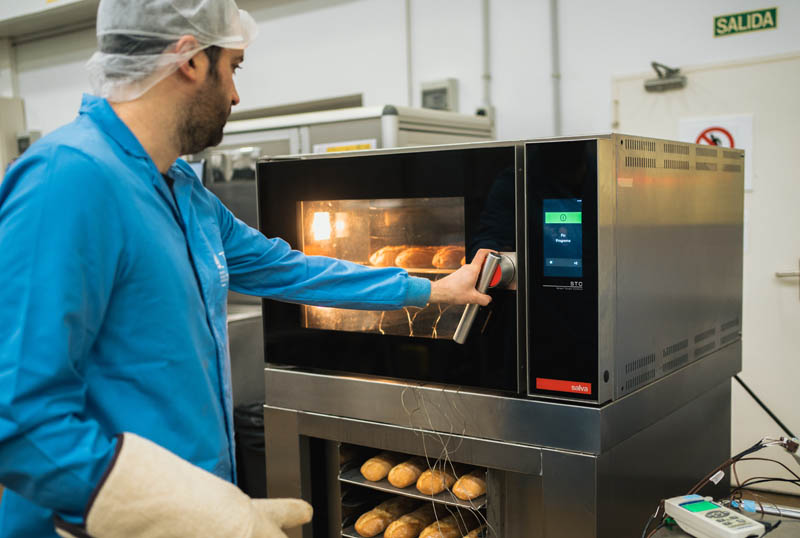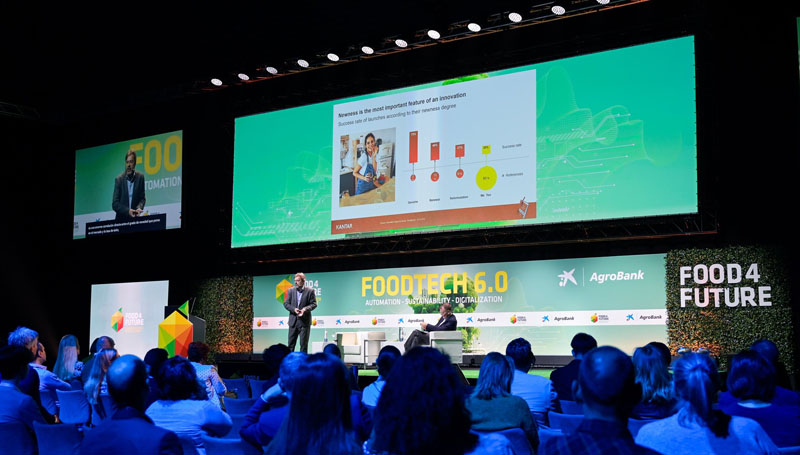Neuromarketing for the food industry: the key to deeper understanding of consumer behaviour
Últimas noticias
Una mirada LGTBIQ+ al reino animal
Circular Economy in Action: Valorisation of By-products through Projects like PRIMA NEWFEED
Strategic Perspectives: Highlights from the Food4Future World Summit for Business Leaders
ANA B BARANDA, YOLANDA RÍOS, NOELIA DA QUINTA. Experts in Neuromarketing for the food industry and Novel Foods, AZTI.
Neuromarketing is becoming a powerful tool for understanding the decision-making behaviour of consumers and their environment. By analysing emotions and understanding cognitive knowledge, it is possible, among other things, to measure the unconscious reaction to a product or advertisement, thus obtaining more objective and observable responses than those obtained through traditional techniques such as questionnaires or interviews. In this sense, AZTI has the latest neuromarketing technologies for the food industry to help food companies from the design and creation of a product to its successful launch on the market.
Índice de contenidos
The purchase decision: influencing factors
Consumers now have a wide range of alternatives within a single food category and therefore need additional information to make a product choice. How they make this choice is a complex phenomenon that is not yet well understood.
Food purchasing decisions are influenced by a number of variables that go beyond the sensory attributes of food, such as taste or smell. Eating is part of a basic and primitive behaviour linked to survival, but it is also based on hedonistic impulses, psychological mechanisms, lifestyle, …
The brand, the type of packaging, the information contained in the product or the way the product is displayed on the shelf all have a significant impact on the emotional state of the consumer and therefore on the purchase decision.
All kinds of research techniques such as surveys, in-depth interviews or focus groups are used to find out what motivates people to choose one product or another. All of these widely used techniques rely on verbal statements from participants. But in these cases, participants may be tempted to lie or to answer with stereotypical accuracy. Even if the person is willing to tell the truth, they may not be aware of the answers we are trying to get, as 95% of thoughts and emotions are produced at an unconscious level.
It is therefore very important to explore the consumer’s mindset and mental process in order to identify their interests and predict their purchasing behaviour. We know that the more attention a product receives, the more choices there are, which is why companies are now demanding more complete and accurate studies of consumer behaviour.
Neuromarketing as a tool for the study of the subconscious mind
It is in this area of the study of the unconscious that the application of neuromarketing techniques to the food industry has become increasingly important in market and consumer research, especially in the areas of advertising, product research and the measurement of consumer emotions.
The wide range of advanced technologies and new ways of conceptualising consumer behaviour and decision making allow detailed analysis of neurological and psychophysiological parameters, both in the laboratory and in real environments (e.g. supermarkets).
Several tools are used to study behaviour and the psychological and physiological response to the stimuli presented. It is important to be aware that none of these alone provides conclusive results and that it is best to use a combination of several of them together with a very careful study of the results.

Most popular neuromarketing technologies for the food industry
Some of the most popular technologies are eye tracking, galvanic skin response and reading facial expressions.
Eye tracking technology
Eye tracking allows the information to be obtained by analysing a person’s eye movements. It allows us to know what they are looking at at any given moment, for how long, and the process they follow to look from one place to another, identifying exactly where they are focusing their attention. It is also possible to detect pupil dilation, which is an indicator of interest in the stimulus. This provides highly accurate temporal and spatial information.
This technology can be used in two different ways. Desktop systems attached to a monitor can be used to evaluate images or videos, while more realistic situations such as supermarket shelves can be evaluated using tracking glasses. This system allows the user to move and interact with the scene in a natural way, which is important when studying consumer behaviour in shopping situations.
The main areas of application of this technology in the food sector are several. The consumer’s response to the effectiveness of the brand’s communication (what, how and where) can be studied, which is essential to attract the consumer’s attention and thus obtain information that can guide their choice. Similarly, the consumer’s reaction to the packaging can be assessed, as it plays a crucial role in the perception and expectations of a product. Information can also be obtained on the influence of health claims and symbols on people’s purchasing behaviour, as well as the visual sensations caused by the colours, layout and shape of a given product or product shelf.
GSR, galvanic skin response
GSR – Galvanic Skin Response is based on the measurement of the continuous changes in the electrical properties of the skin, such as conductivity, caused by the variation in perspiration of the human body. By monitoring the user’s response, levels of arousal or relaxation of emotional responses can be determined.
Unconscious behaviour that is not under cognitive control can be monitored by GSR. Skin conductance is modulated solely by autonomic sympathetic activity, which controls bodily processes, cognitive and emotional states and cognition at a completely unconscious level. In other words, the level of skin conductance cannot be consciously controlled. This is what makes GSR technology the perfect marker for measuring emotional arousal, as it provides a clear insight into a person’s physiological processes.
The use of this technology can reveal which colours (e.g. for packaging) are most exciting, or which flavours or textures make the strongest impression. Combined with facial expression reading technology, which is commonly used to explore liking responses to food products and predict consumer preferences, it can provide information that traditional techniques based on sampling through explicit self-reporting cannot.
Facial Reading technology
Facial Reading analyses facial expressions to determine a person’s emotions. Many indicators can be obtained from the face, providing useful information for social interaction and proper communication.
Facial expressions are often considered to be the richest form of non-verbal communication. They are an indicator of the consumer’s reactions, i.e. his or her satisfaction with a product (food, drink, packaging, advertising, …).
People are capable of thousands of facial expressions. However, there is a small set of 6 distinctive facial patterns that almost everyone, regardless of gender, age or culture, associates with certain emotions. These emotions, known as the basic emotions, are happiness, anger, surprise, fear, sadness and disgust. Facial expression technology is able to distinguish these emotions and provide information about the general attitude of the person evaluating the stimulus of interest (valence, positive or negative character). However, this technology does not provide information on the level of emotional arousal, so it is recommended that it is used together with GSR.
Until recently, the analysis of facial expressions was done manually by recording the movements of several specific points on the face in a sequence of images, but it is now possible to decode facial expressions using software developed for this purpose. The association of emotions is made from the combination of contraction and relaxation movements of the 44 facial muscles present.
Facial expression analysis technology can be used to monitor reactions to a product as well as reactions to a print ad, TV ad, video, etc.
Finally, it is important to remember that each biometric sensor can reveal a specific aspect of human cognition, emotion and behaviour. Depending on the desired response, it is important to combine technologies to obtain meaningful information about the dynamics of attention, emotion and motivation.
The future of neuromarketing for the food industry
Although neuromarketing techniques have mainly been used in advertising in the food and drink sector to optimise advertising campaigns and maximise the emotional impact of the brand, there are many other areas where they can be useful in understanding consumer response to nutritional information, the health content of labels, the presence of additives and the evaluation of information about the functionality of products. Neuromarketing also makes it possible to optimise the design of products (food, packaging, website, etc.) in order to improve the consumer’s experience.
The use of a multidisciplinary perspective that combines neuromarketing technologies with traditional ones, together with the correct interpretation of the results, will help to understand the increasingly complex decision-making of consumers and the consumer context.
AZTI has a multidisciplinary team specialising in neuromarketing that works on these concepts, providing services to companies in the food and beverage sector, effectively creating specific strategies for groups of consumers that could be relevant to the impact of food marketing. The understanding and impact of the customer is studied in depth, from different approaches such as the development of a product’s formulation, the design and communication of its packaging in its marketing, or the effectiveness of its advertising.







